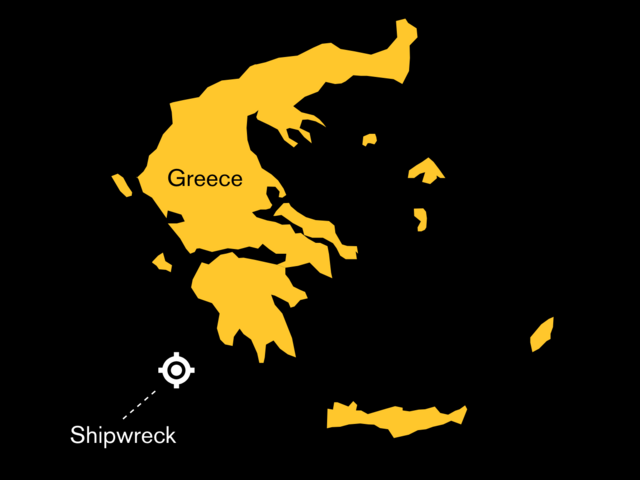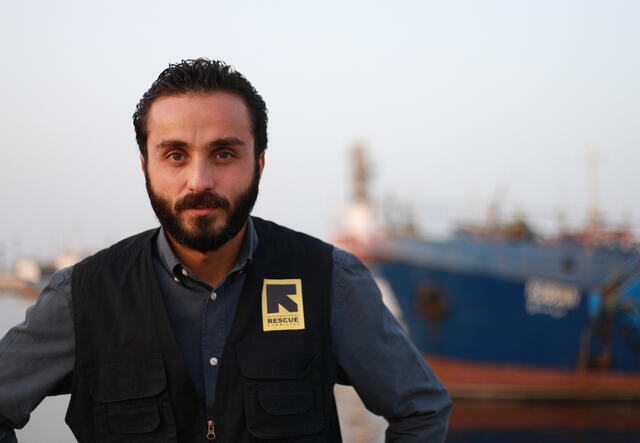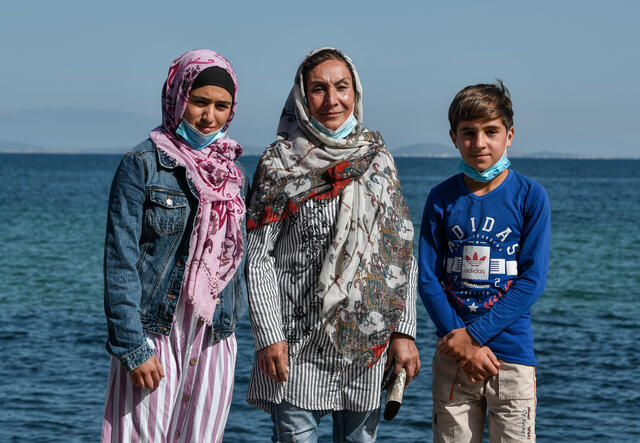On June 14, a ship capsized in the Mediterranean Sea and sank off the coast of Greece. Despite a rescue mission that saved more than 100 people, more than 80 people died. Another 500 people are estimated to be missing and may be dead.
THE International The Rescue Committee (IRC) continues to call for a transparent investigation into the tragedy.
Every year, thousands of people undertake this dangerous journey across the Mediterranean Sea. It is all too common for these voyages to end tragically, with deaths in the Mediterranean Sea reaching record numbers. six years high in 2023.
Learn more about the shipwreck in Greek waters and what world leaders can do to respond to the humanitarian crises in the Mediterranean Sea.
What happened to the Greek shipwreck?
In the early hours of June 14, a fishing boat with around 750 people on board sank approximately 47 nautical miles off the coast of Pylos, Greece. The ship left Libya and was heading towards Italy.
The sinking is one of the most devastating accidents to occur in the Mediterranean Sea in recent years. As the death toll continues to rise, this shipwreck will likely become the second deadliest on record for asylum seekers.

Image showing the location where the shipwreck occurred, approximately 47 nautical miles off the coast of Pylos, Greece.
Who was on the ship?
Asylum seekers from PakistanEgypt, Syria, Afghanistan and Palestine were on board the ship. Under international and European Union law, asylum seekers must arrive in an EU country before they can apply for asylum there.
Nine men on board were suspected smugglers, accused of crimes related to human trafficking.
Why do asylum seekers try to cross the Mediterranean Sea?
Globally, the number of displaced people has reached the a staggering 110 million. Many people desperately trying to cross the Mediterranean Sea have been driven from their homes by rising food insecurity, unemployment and the impact of climate change, with some fleeing violence, conflict or persecution in countries such as Afghanistan, Syria, Sudan or Somalia.
The vast majority of people attempting to cross the Mediterranean first pass through Libya, where they are often exposed to horrific violence, including kidnappings, torture and extortion. Many people arriving in Libya are also held in detention centers, where the United Nations describes their conditions as “crimes against humanity.”
“I was scared when they took us off our boat in the middle of the sea, but when I knew we were going back to Libya, I remembered all the bad things that had happened to me in the center of detention, so I jumped in the water. … I can’t go back,” says Fnan*, a 26-year-old Eritrean whose boat was intercepted by the Libyan coast guard while trying to cross the Mediterranean Sea.
“People are desperate to leave Libya because of the conditions they live in,” says Tom Garofalo, IRC country director in Libya. “Every day they know they could be kidnapped, arbitrarily detained and subjected to violence and abuse. Risking their lives at sea is a last resort.
A common route taken by many asylum seekers, called the Central Mediterranean Route, stretches from sub-Saharan Africa to North Africa, including Libya, and across the Mediterranean Sea to Europe. It is one of the most dangerous migration routes in the world.

Adel works around the clock, as part of IRC Libya’s offshore response team, to provide essential assistance to people returned to Libya by the country’s coast guard. “People need to know that only God knows how difficult the situation of these migrants and refugees is,” says Adel. “These are people trying to escape death, oppression. They want to be able to lead a decent life, learn and work in order to ensure a promising future.”
Photo: Ahmed Rashed for the IRC
How dangerous is crossing the central Mediterranean?
The central Mediterranean Sea is one of the deadliest migration routes in the world.
On April 18, 2015, the deadliest known shipwreck in the Mediterranean occurred when an overcrowded fishing boat collided off the coast of Libya with a cargo ship trying to come to its aid. Up to 1,100 people were on board; only 28 people survived.
Most recently, in February 2023, at least 94 people died when a boat carrying 200 migrants sank in harsh weather conditions while trying to dock on the coast of southern Italy.
These are just a small selection from a long line of preventable tragedies. Asylum seekers are only forced to undertake the dangerous journey across the Mediterranean because there are not enough safe and legal routes.
How common are migrant journeys across the Mediterranean Sea?
Even before last Wednesday’s deaths, at least 1,039 people were missing on Central Mediterranean crossings this year, but the real number is likely much higher because many wrecks go unrecorded. Overall, the International Organization for Migration has recorded more than 27,000 migrants missing in the Mediterranean since 2014.
In addition to the deadly Central Mediterranean route, the Western Mediterranean route is used by migrants seeking to reach Spain from Morocco or Algeria. The Eastern Mediterranean route is mainly used by Syrian, Iraqi, Afghan and other non-African migrants who first travel to Turkey and then try to reach Greece or other European destinations.

Rahima*, 45, stands with her daughter Nelofar and son Ahmad, near the coast of Lesvos, Greece. Rahima, a former police officer, was forced to flee Afghanistan after receiving death threats against her and her children.
Photo: Louis Gouliamaki for the IRC
How should world leaders deal with shipwrecks in the Mediterranean Sea?
Unfortunately, too many governments and politicians wrongly believe that cruelty and inhumanity are the best options for restoring order to their borders. In reality, these solutions push people into the hands of smugglers who must pass through checkpoints, cross borders and ultimately onto boats.
“The European approach to migration and asylum is a failure,” says Harlem Désir, IRC senior vice president for Europe. “The real crisis lies not in people seeking refuge, but in the blatant lack of political will to provide it. »
EU leaders must confront the current crisis in the Mediterranean. Saving lives is not a crime: States must step up their search and rescue efforts, as well as coordination with humanitarian organizations as well working to save lives at sea.
They should also act in solidarity with countries of first arrival, expand legal avenues for people seeking protection, treat people who have crossed the Mediterranean with dignity and defend the right to asylum in Europe.
“It is imperative that EU leaders take urgent, principled action to prevent further suffering at Europe’s borders,” said Imogen Sudbery, senior director of advocacy for Europe at the IRC . “If they fail to do this, the Mediterranean will not only become a graveyard for more people seeking protection, but also for its own values of human rights, dignity and equality. »
Investigate the Greek Shipwreck
The IRC calls on the EU and its member states to launch a full and transparent investigation into the sinking.
“It is deeply shameful that hundreds of people perished in one of the deadliest shipwrecks ever recorded in the Mediterranean Sea and we have yet to have a full and transparent investigation into this incident,” Désir said. “It’s time to take concrete steps toward accountability and finally put an end to these unnecessary and preventable deaths.” »
The Greek government has opened an investigation into the sinking, but serious concerns have been raised about its independence and transparency.
How does the IRC support asylum seekers in Europe?
The IRC provides vital medical services, cash and other essential support to vulnerable people in their countries of origin, transit and destination.
Since 2016, the IRC has been present in Libya, providing vital health and protection services, strengthening the country’s health system, and building the capacity of Libyan youth in peacebuilding and governance initiatives. In the first seven months of 2023, the IRC carried out 49 emergency responses to boats intercepted at sea and returned to Libyan shores, supporting more than 3,800 people, including 190 women and 228 children.
We have also been working in Italy since 2017, providing refugees, asylum seekers and other migrants with access to information, protection, legal assistance and psychosocial support, while also working on the early identification of trafficking survivors.
What can I do to help asylum seekers crossing the Mediterranean Sea?
Seeking asylum is a human right. Share this post raise awareness of the dangers asylum seekers face when crossing the Mediterranean Sea.
*Names changed for privacy reasons.


